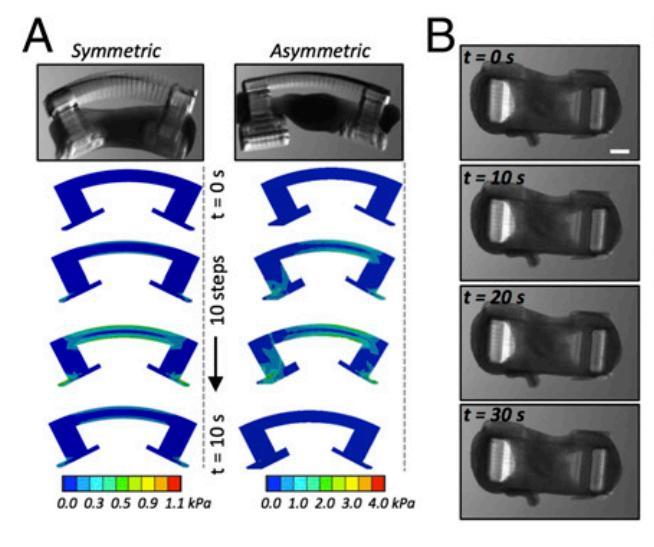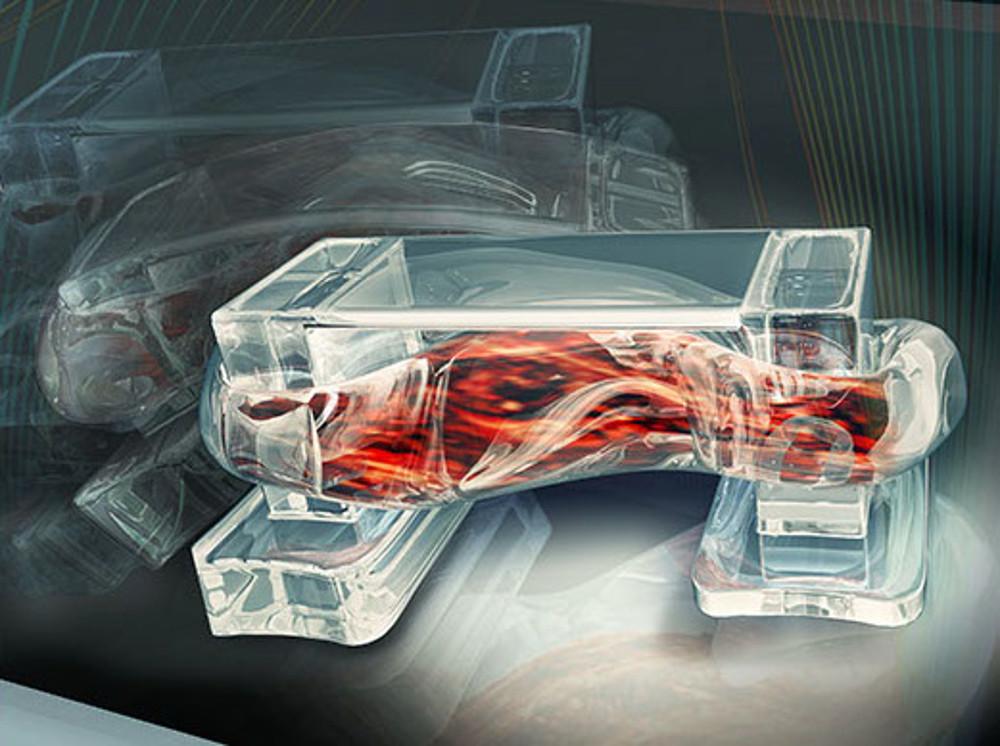 There comes a time when technology can become quite scary. We’ve seen movies that depict times when biological robots have come about, in some cases devastating humanity and in other cases coming to our aid. The idea of biological robotics is one which can scare off some people, while exciting others.
There comes a time when technology can become quite scary. We’ve seen movies that depict times when biological robots have come about, in some cases devastating humanity and in other cases coming to our aid. The idea of biological robotics is one which can scare off some people, while exciting others.
Engineers and researchers at the University of Illinois at Urbana-Champaign, have gotten us one step closer to real, walking, biological robots, which they refer to as “bio-bots”.
The team of researchers has used 3D printing, more specifically stereolithography, in order to 3D print what could be referred to as immitation bone, using hydrogels. The 3D printed hydrogels form a backbone for the bio-bots, which is flexible enough to act as though it consists of two joints.
In order to create these “bio-bots” the team of engineers anchored living muscle cells to the 3D printed hydrogels, using two specially designed posts that were incorporated into the design. These work like tendons, in that they attach the muscle to the bone.
“The structure of the bio-bot was fabricated from a synthetic hydrogel using stereolithographic 3D printing, which boasts a short fabrication time, potential for scalability, and spatial control, explains the report.”
This isn’t the first time that this group has utilized 3D printing to create similar bio-bots. In the past, they have developed walking bio-bots that used living heart cells, in order to cause muscular contraction. With heart cells, however, they are constantly contracting, thus scientists have no way of controlling them. In this latest project, the developers used skeletal muscle cells, which can be triggered by using electric pulses, thus allowing for them to more easily be controlled.
“Skeletal muscles cells are very attractive because you can pace them using external signals,” said study leader Rashid Bashir. “For example, you would use skeletal muscle when designing a device that you wanted to start functioning when it senses a chemical or when it received a certain signal. To us, it’s part of a design toolbox. We want to have different options that could be used by engineers to design these things.”
The next step for researches is the implementation of neurons, to allow the bio-bots to respond to outside stimuli, such as light or chemicals. The use of 3D printing really provides the engineers with the ability to create all different shapes and sizes to use for their bio-bot backbones. It also allows for different degrees of porosity, which could allow for even more advancements in this technology in the future.
The ultimate goal that researchers see for these bio-bots is for the creation of surgical robots, ‘smart’ implants, and aided drug delivery. “The idea of doing forward engineering with these cell-based structures is very exciting,” Bashir said. “Our goal is for these devices to be used as autonomous sensors. We want it to sense a specific chemical and move towards it, then release agents to neutralize the toxin, for example. Being in control of the actuation is a big step forward toward that goal.”
A bio-bot in action:
What do you think? Will 3D Printing eventually lead to the creation of more advanced bio-bots? Discuss in the 3D printed bio-bot forum thread on 3DPB.com.
Subscribe to Our Email Newsletter
Stay up-to-date on all the latest news from the 3D printing industry and receive information and offers from third party vendors.
You May Also Like
3D Printing Financials: Fathom Struggles in Financial Quicksand During Critical Transition
Facing a year of key transitions and financial pressures, Fathom (Nasdaq: FTHM) has filed its annual report for 2023 with the U.S. Securities and Exchange Commission (SEC). The document outlines...
Latest Earnings Overview for Australian 3D Printing Firms Titomic and AML3D
Australian 3D printing manufacturing firms Titomic (ASX: TTT) and AML3D (ASX: AL3) reported their financial results for the period from July to December 2023, marking the first half of their...
3D Printing Webinar and Event Roundup: April 7, 2024
Webinars and events in the 3D printing industry are picking back up this week! Sea-Air-Space is coming to Maryland, and SAE International is sponsoring a 3D Systems webinar about 3D...
3D Printing Financials: Unpacking Farsoon and BLT’s 2023 Performance
In the Chinese 3D printing industry, two companies, Farsoon (SHA: 688433) and Bright Laser Technologies, or BLT (SHA: 688333), have recently unveiled their full-year earnings for 2023. Farsoon reported increases...
































